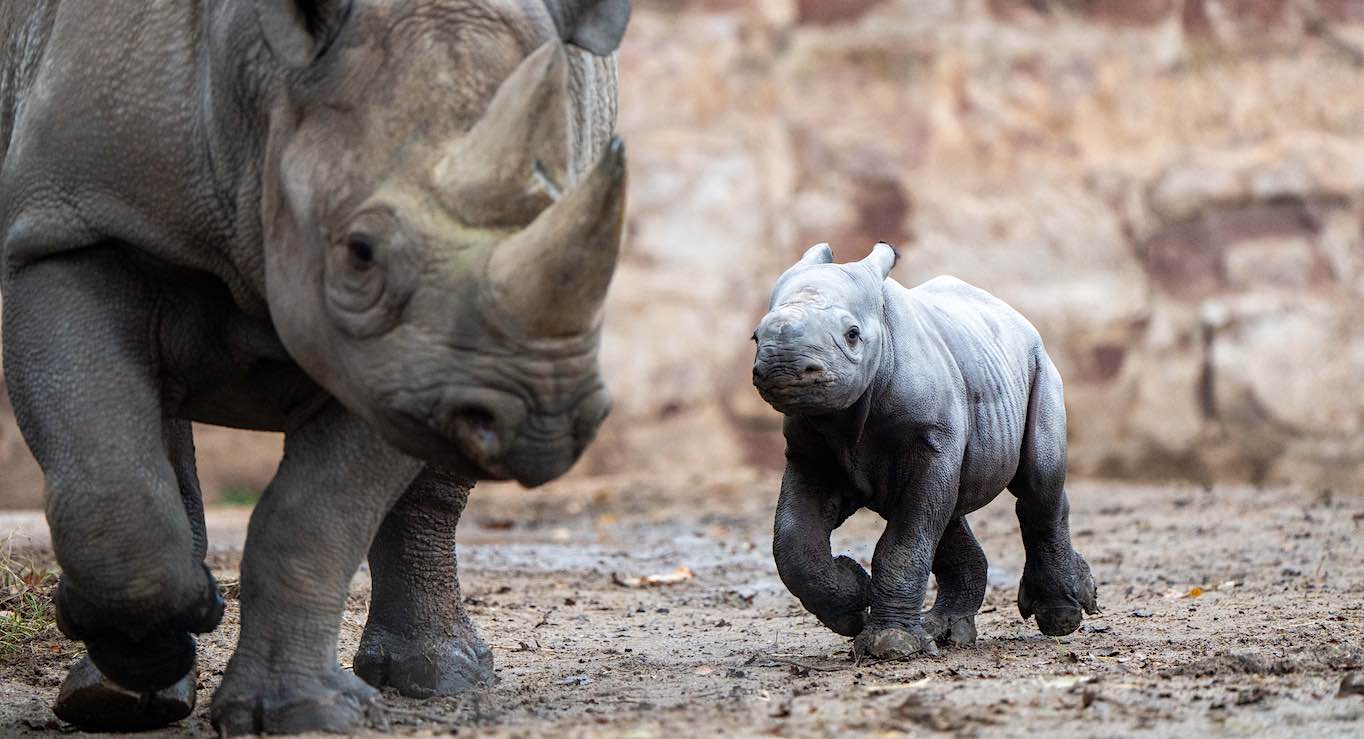
Keepers at Chester Zoo were left thrilled following the safe arrival of a new eastern black rhino calf when mother Zuri gave birth in the daylight, allowing the staff to record the occasion.
Rhino experts say it’s unusual for a calf to be born in daylight, which gave keepers the unique opportunity to witness its 2:45 p.m. arrival after a 15-month pregnancy.

The eastern black rhino is listed as Critically Endangered by the International Union for the Conservation of Nature (IUCN). One of three black rhinoceros subspecies, fewer than 600 of which are now found across Kenya, Tanzania, and Rwanda.
Conservationists believe the birth of a healthy calf will help global efforts to prevent the species from disappearing altogether.

“We’d been eagerly awaiting this birth for 15 long months and, as it’s quite unusual for a rhino to give birth in daylight hours, we really didn’t expect it to happen right in front of us as we were going about our day,” said the zoo’s rhino team manager Emma Evison.
“To be able to witness the calf safely entering the world, in front of our very own eyes, was just the most incredible privilege. She’s very inquisitive and full of energy, which is just brilliant to see.”

“This precious newborn’s arrival is another positive step in safeguarding the species, which is what the endangered species breeding program in European conservation zoos that we’re a leading part of is striving to do,” continued Evison, who added that a group of black rhinos born and bred in the program have already been relocated to protected areas in Africa.
But this is just one way in which Chester Zoo has been helping rhino conservation. They’ve also developed a unique way of pairing rhinos in the hopes they will mate.

“We’re home to the UK’s only zoo-based animal endocrine lab where we’ve developed the skills and techniques to track rhino hormones by closely analyzing their dung,” said Mike Jordan, director of animals and plants at the Chester Zoo.
“This has helped us to massively improve the chances of a successful mating and further increase numbers of this Critically Endangered species.”
“The technology is so precise that we’re now transferring it to a specialist lab that we’ve helped to create in Kenya which is helping rangers and vets there to boost the wild population,” he said.
WATCH The sweet moment below…